Part in a series on Tarot variant games
Previously
How to Play the Game of Triumphs
Tarocco Bolognese
When 78 cards just wasn’t enough there was the Minchiate which contains the usual 56 suit cards along with a whopping 40 trump cards plus the Fool for a total of 97 cards. This monster deck out of Florence was first attested in 1543 and thought to have come about sometime before the 1530’s.1 At one point the game enjoyed a wide popularity across Italy, and even a small international audience, though it completely died out by the mid-20th century.
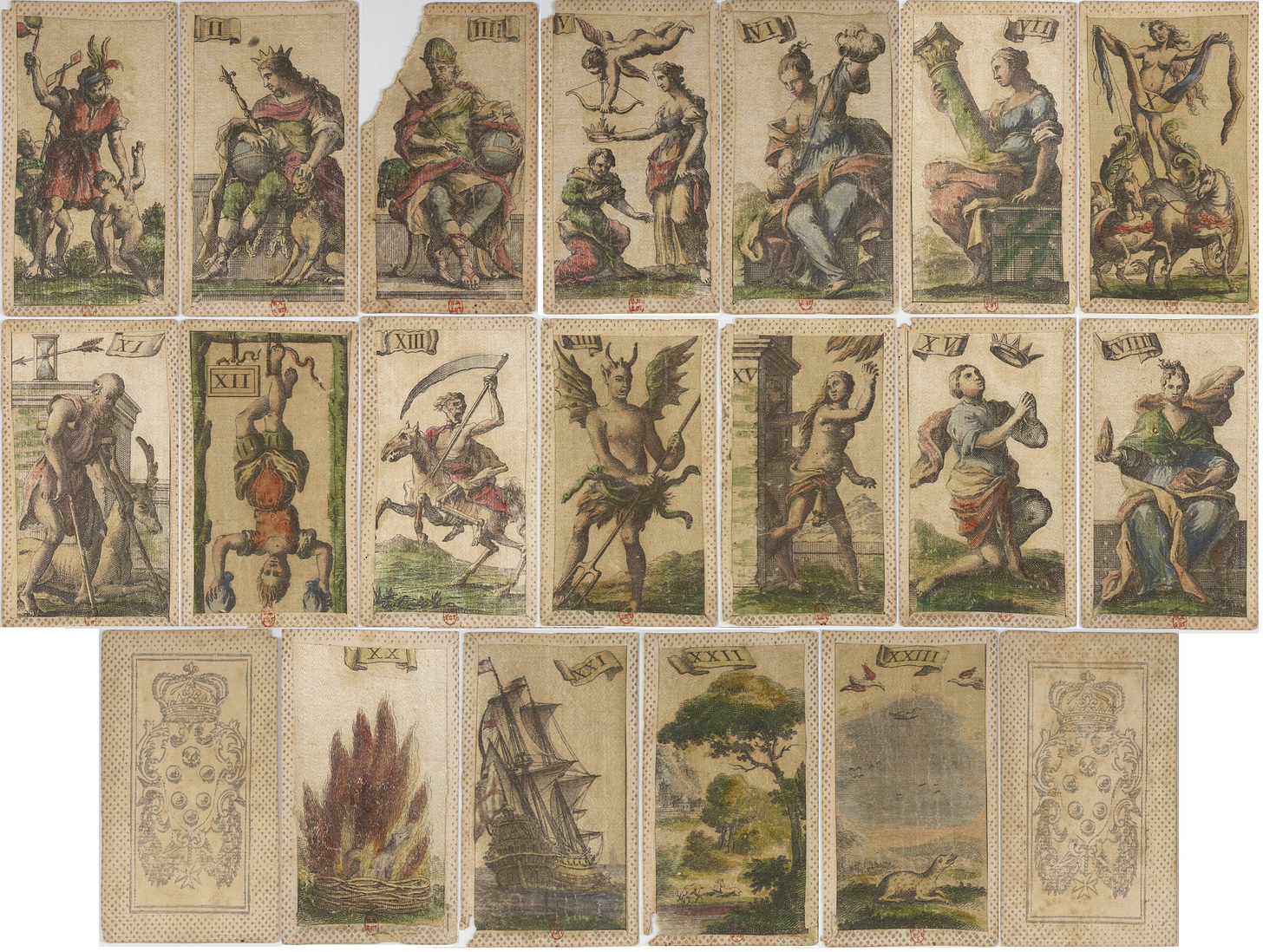
I - Papa uno (Bagatto)
II - Papa due (the 'Grand Duke’)
III - Papa tre (the Western Emperor)
IV - Papa quattro (the Eastern Emperor)
V - Papa cinque (Love)
VI - Temperance
VII - Fortitude
VIII - Justice
IX - Wheel of Fortune
X - Chariot
XI - il Gobbo (the Hunchback) or it Tempo (Time)
XII - l’Impiccato (the Hanged Man)
XIII - Death
XIV - il Diavolo or it Demonio (the Devil)
XV- la Casa del Diavolo (the House of the Devil)
XVI - Hope
XVII - Prudence
XVIII - Faith
XIX - Charity
XX - Fire
XXI - Water
XXII - Earth
XXIII - Air
XXIV - Libra (the Scales)
XXV - Virgo (the Virgin)
XXVI - Scorpio (the Scorpion)
XXVII - Aries (the Ram)
XXVIII - Capricornus (Capricorn or the Goat)
XXIX - Sagittarius (the Archer), also called Chiron
XXX - Cancer (the Crab)
XXXI - Pisces (the Fishes)
XXXII - Aquarius (the Water-Carrier)
XXXIII - Leo (the Lion)
XXXIV - Taurus (the Bull)
XXXV - Gemini (the Twins)
(XXXVI) - La Stella (the Star)
(XXXVII) - La Luna (the Moon)
(XXXVIII) - il Sole (the Sun)
(XXXIX) - il Mondo (the World)
(XL) - le Trombe (the Trumpets)
Minchiate follows the type-A southern style card ordering. Its trump lineup features all the familiar tarot subjects minus the ever controversial Popess thus everything is moved down a number. The Papi are present like in the Bolognese game except someone got confused and put Love with them. 20 cards have been inserted between trumps 15 and 35 these include a card for Prudence, the 3 theological virtures, the 4 elements and the 12 Zodiac signs. The deck basically contains overt representations of all the things occult traditions such as the Golden Dawn assign a correspondence for. The final five cards are known as the Arie and are unnumbered. Typically the top 8 trumps have red backgrounds (below), however the 1712 deck didn’t do this.
The game’s first attested name was Gemini after its highest numbered trump, it did not become christened as ‘Minchiate’ until towards the end of 16th century. Sminchiate is a word whose only known usage comes from Bolognese tarot where it means ‘to play a high trump’, it also appears in Francesco Berni’s 1526 Capitolo della Primiera possibly hinting at a wider usage within gaming circles. The word Minchiate has been suggested to be another term for fool given its proximity to the Italian minchione. If tarocchi indeed means fool this could have been intended as a longer, fancier, more syllabic play on that theme. In other parts of Italy, such as in Sicily and Liguria, the word minchiate is a 2nd person plural verb with an obscene meaning relating to male genitalia. In these places the game was instead known as Gallerini or Ganellini respectively.
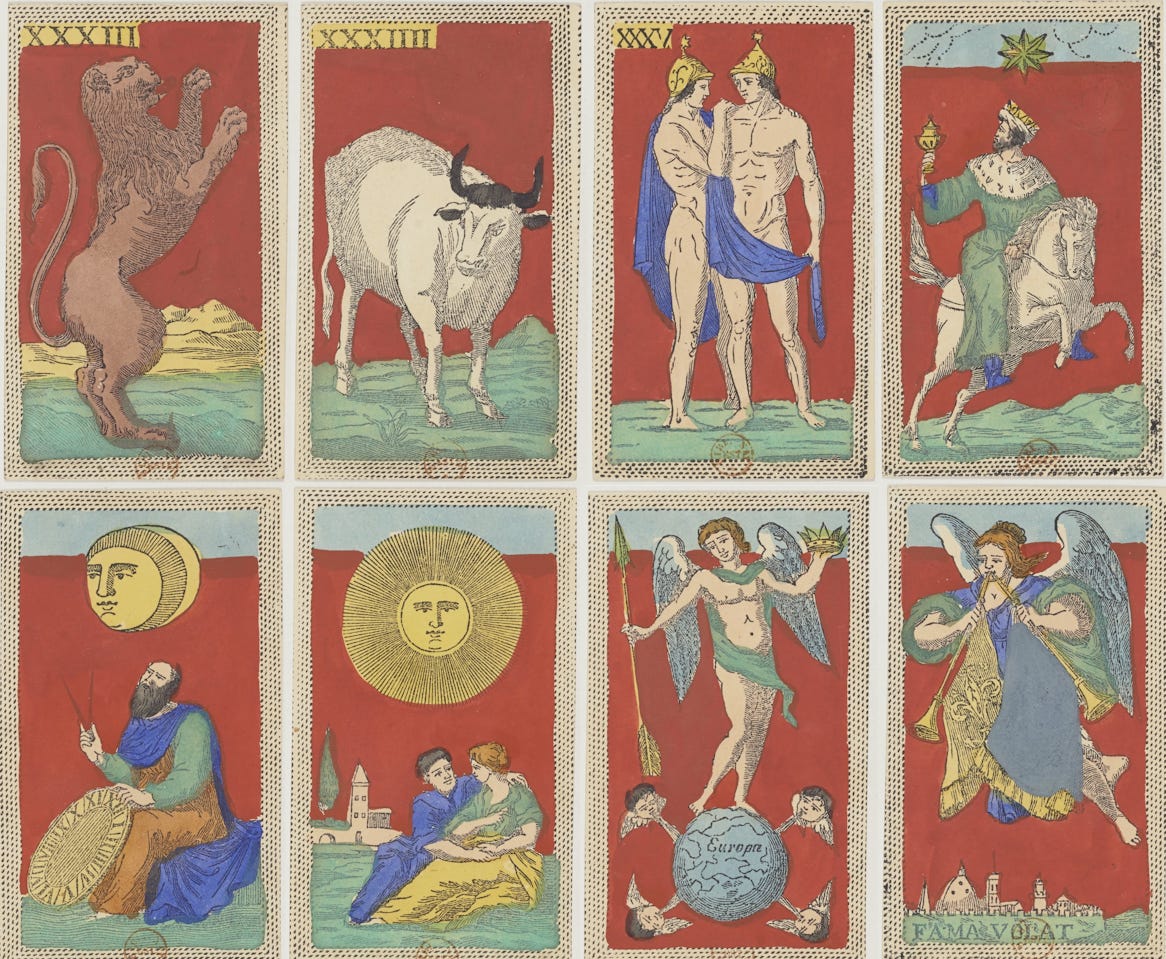
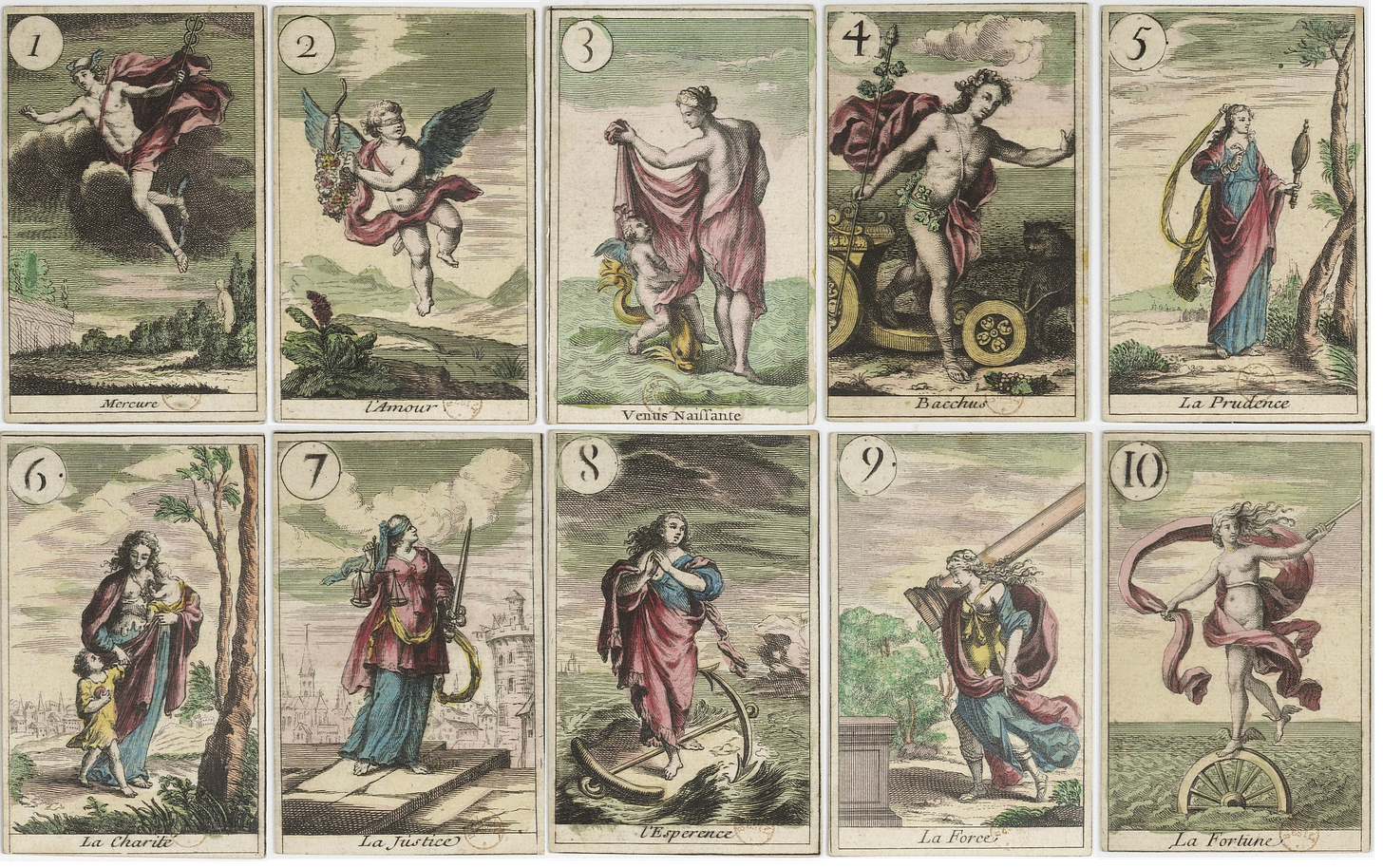
The French Engraver François de Poilly produced a unique French suited Minchiate deck after a trip to Italy in the 1650’s. His deck replaced many of the typical tarot figures with mythological figures, the stages of life and the 5 senses - the only thing left in intact were the virtues, the elements, the zodiac and of course the arie. The top 8 cards have red backgrounds like their Italian counterparts. The suit signs are each dedicated to a different continent: Hearts for Europe, Diamonds for Asia, Spades for Africa and Clubs for America. De Poilly’s Minchiate is the oldest known French suited tarot deck.
As for the game, it can be played with 2-4 players but was most commonly played in 2 player partnerships like bridge or the other tarot games we have discussed. As 97 is not an even number the whole deck is not dealt out, in a four player game hands of 21 are dealt to each player with the remainder going into what is called the fola which sits next to the dealer. The dealer is required to inspect the fola and extract card 29 if it is present, the dealer’s team can also ‘rob’ the fola by exchanging cards with it.
Minchiate is in many ways similar to Tarrochino as both favor set collection over individual card capture and there is a bonus for winning the last trick. However the set combinations are different and Minchiate has way more counting cards as exactly half of it’s 40 trumps are worth points to capture.
Cards 36 - 40, the Arie, are worth 10 points
The Fool, Kings, Cards 1,10,13,20,28, (29*), 30-35 are worth 5 points
Cards 2-5, the Papi, are worth 3 points
All other cards are worth 0
Winning the last trick is worth 10 points.
*29 is worth nothing on it’s own but it is important for forming combinations known as versicole which are sequences of 3 or more consecutive counting cards. When counted in one of these sequences 29 is worth 5 points.
There are two types of Versicola, regular and irregular (sequential and associative).
Cards 2-5 can be used in what is called a versicola di papi
Cards 28+ can be used to form a versicola di tarocchi, if it contains one or more of the Arie is it is a versicola d’Arie. If containing the XXX it is di trenti, XXXI or XXXII: di sopatrenti. If it consists of XXXIII - XXXV is is a versicola di rossi
The Irregular versicola are as follows:
1, 40 and the Matto = Versicola del Matto
1, 13, 28 = Versicola del Tredici
Any consecutive sequence of multiples of 10 (10, 20, 30; 20, 30, 40; 10, 20, 30, 40) = Versicola delle diecine
3 or more Kings = Versicola dei Regi
With the sole exception of the 29 card, the value of any versicola is simply the sum total of the values of the cards it contains - including another 5 for the matto if it is acting as part of the sequence.
All versicole must be declared at the start of the game.
The Minchiate deck was also used for two non-tarot games: Al Palio and A sei tocchi.2
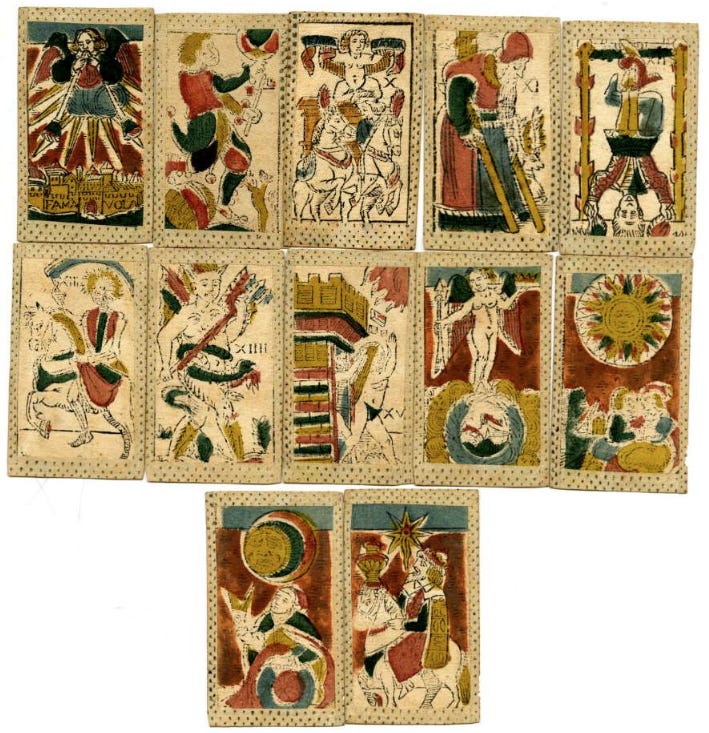
I spread before me now the forty cards,
Yet 'tis not forty cards which here I spread,
But forty of the god's superior
To the deity Laverna, that their forms
May each and all become volcanoes hot
Until Laverna comes and brings my child;
And 'til 'tis done may they all cast at her
Hot flames of fire, and with them glowing coals
From noses, mouths and ears (until she yields);
Then may they leave Laverna to her peace,
Free to embrace her children at her will!- C. G. Leland, Aradia, or the Gospel of the Witches
While there isn’t any divinatory tradition associated with Minchiate, Paul Huson in The Devil’s Picturebook speculated that the pack might have been the 40 cards C. G. Leland was referring to in the incantation above.3 This incantation is supposed to have come from a Florentine witch coven active in the 19th century that was devoted to the goddess Diana.
That about wraps it up for Minchiate, unlike the other tarots we have looked at , these cards are pretty on the nose - they wanted a Zodiac, so they painted a Zodiac - and so on. Still, with it’s sheer variety I find it it to be one of the more interesting decks. What are your thoughts on this pack?
NEXT - Tarocco Siciliano
Michael Dummett with Sylvia Mann, The Game of Tarot (1980) [Pg. 338]
Chapter 17 is referenced throughout
Paul Huson, The Devil’s Picturebook (1971) [Pg. 67]



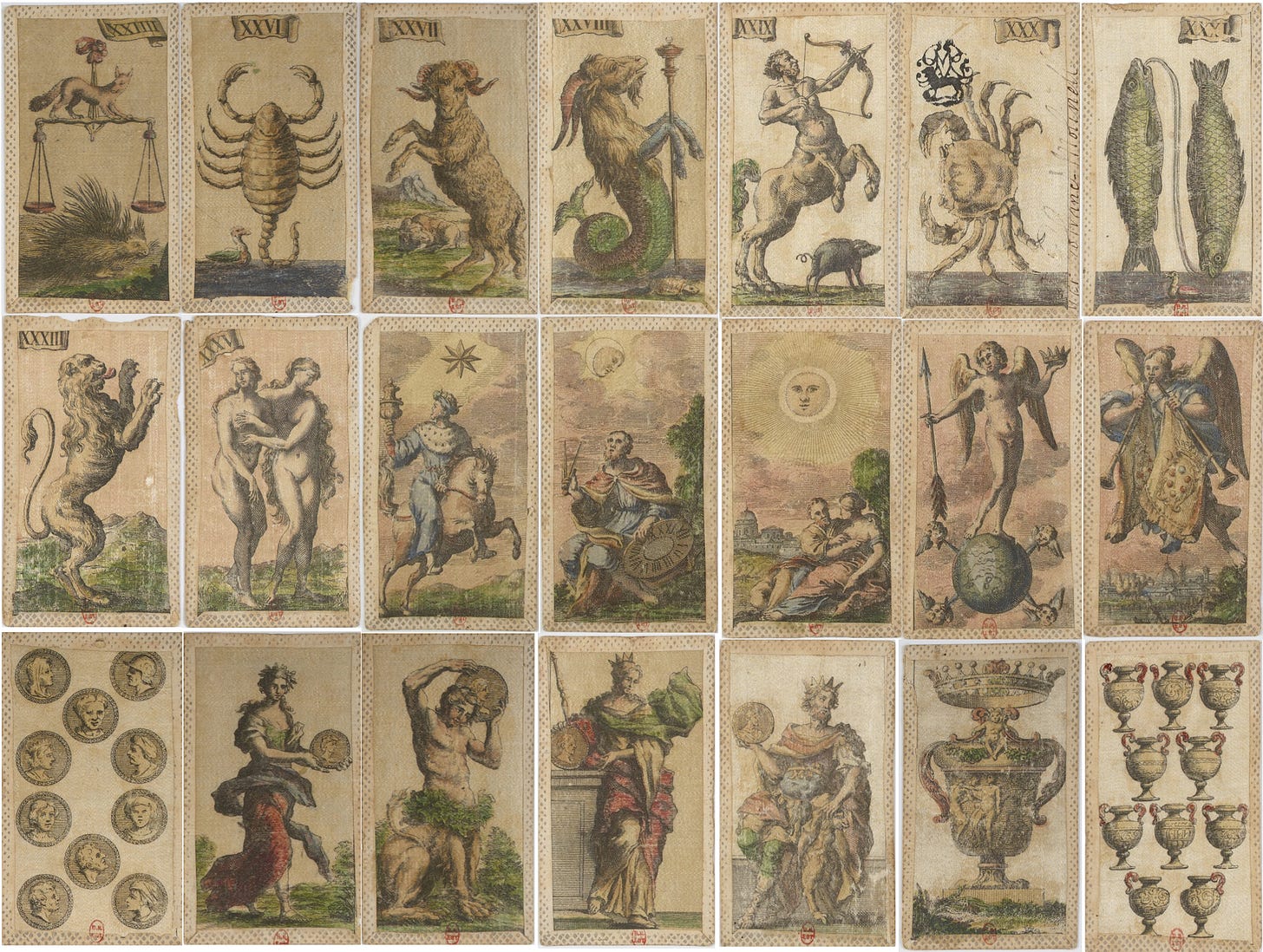
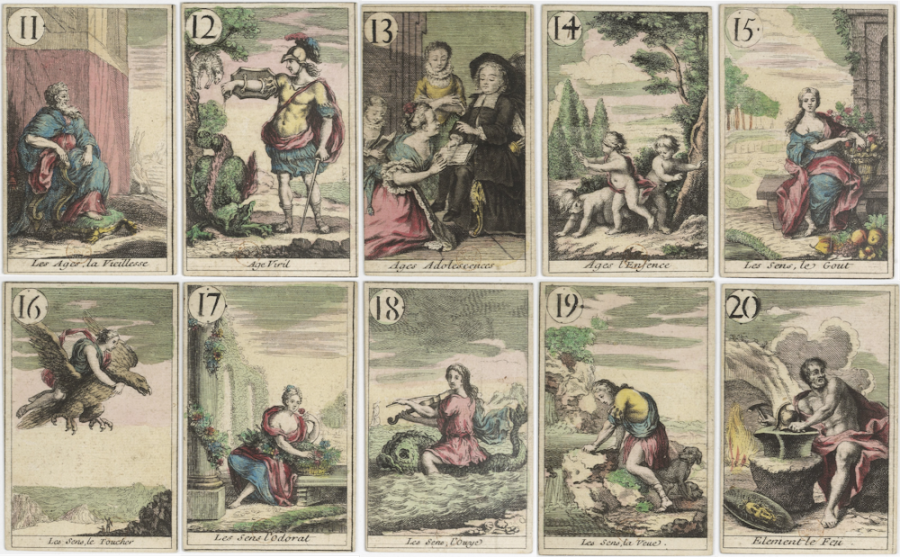

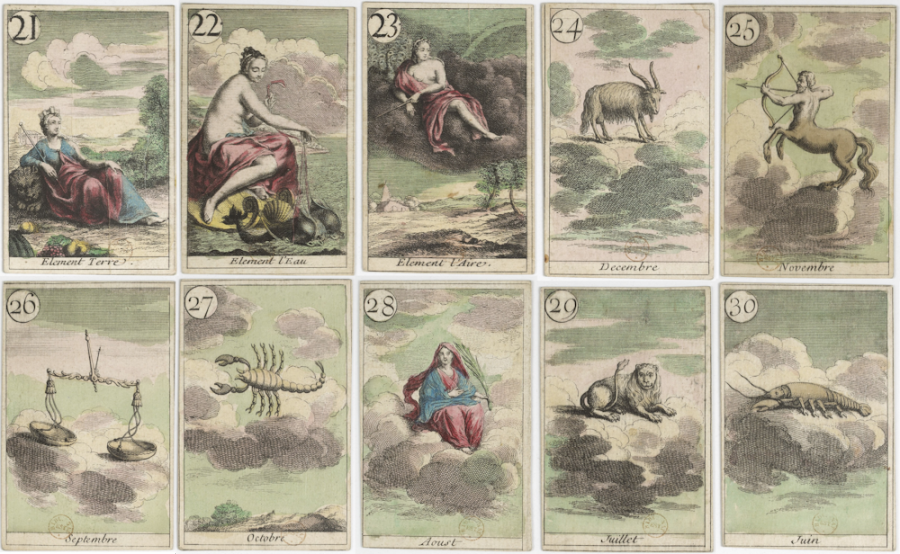
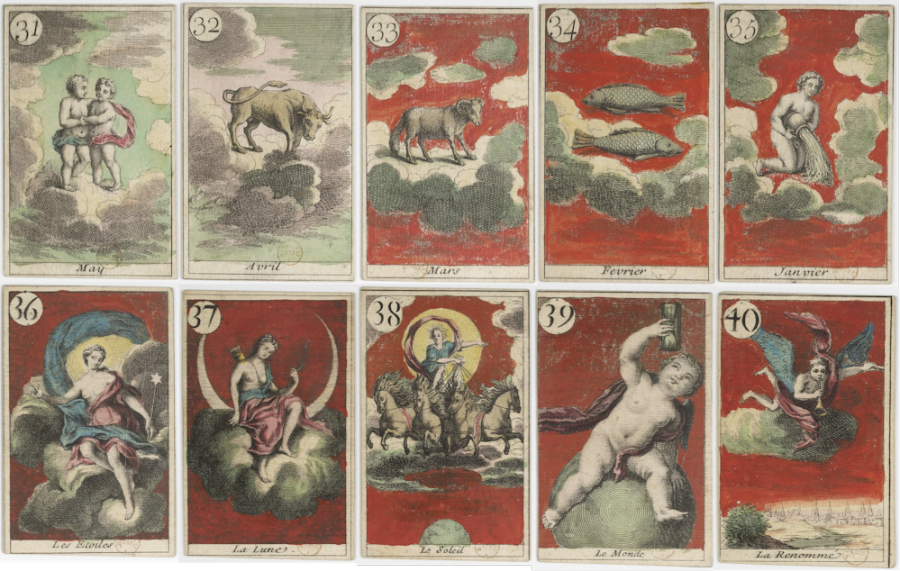
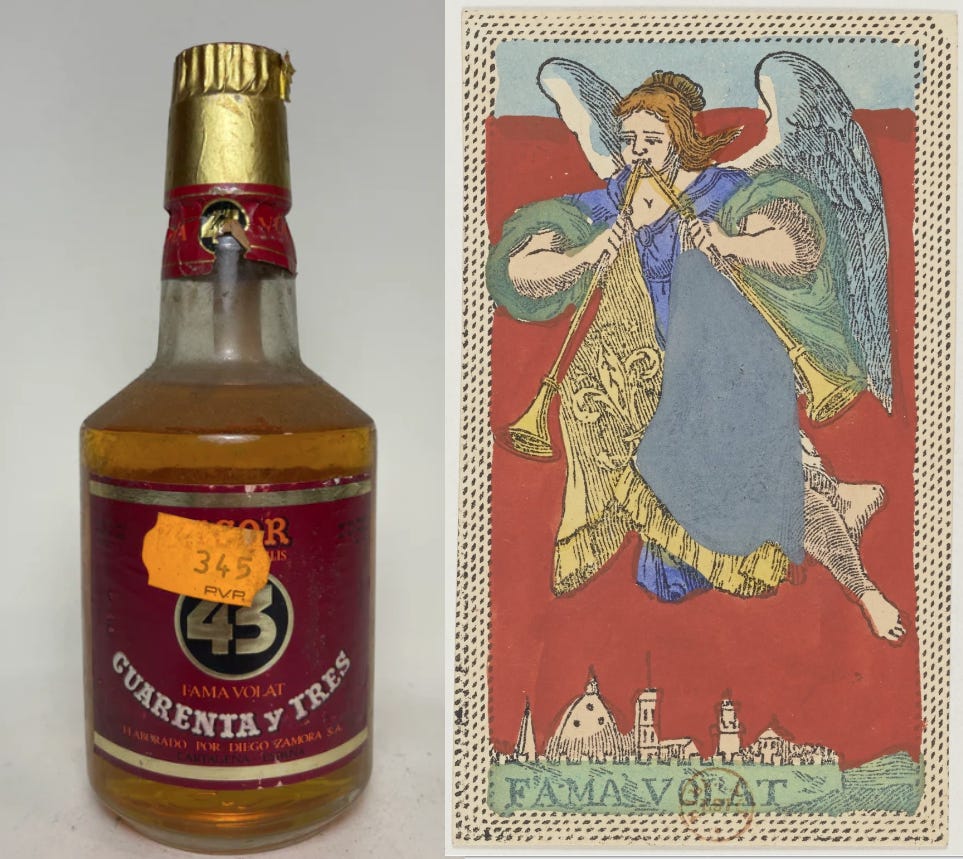
I love how extra this deck is — literally someone said, ‘Why stop at 78 when you can map the whole cosmos?’ Definitely one of the more fascinating ones you’ve shared.
Fascinating!!